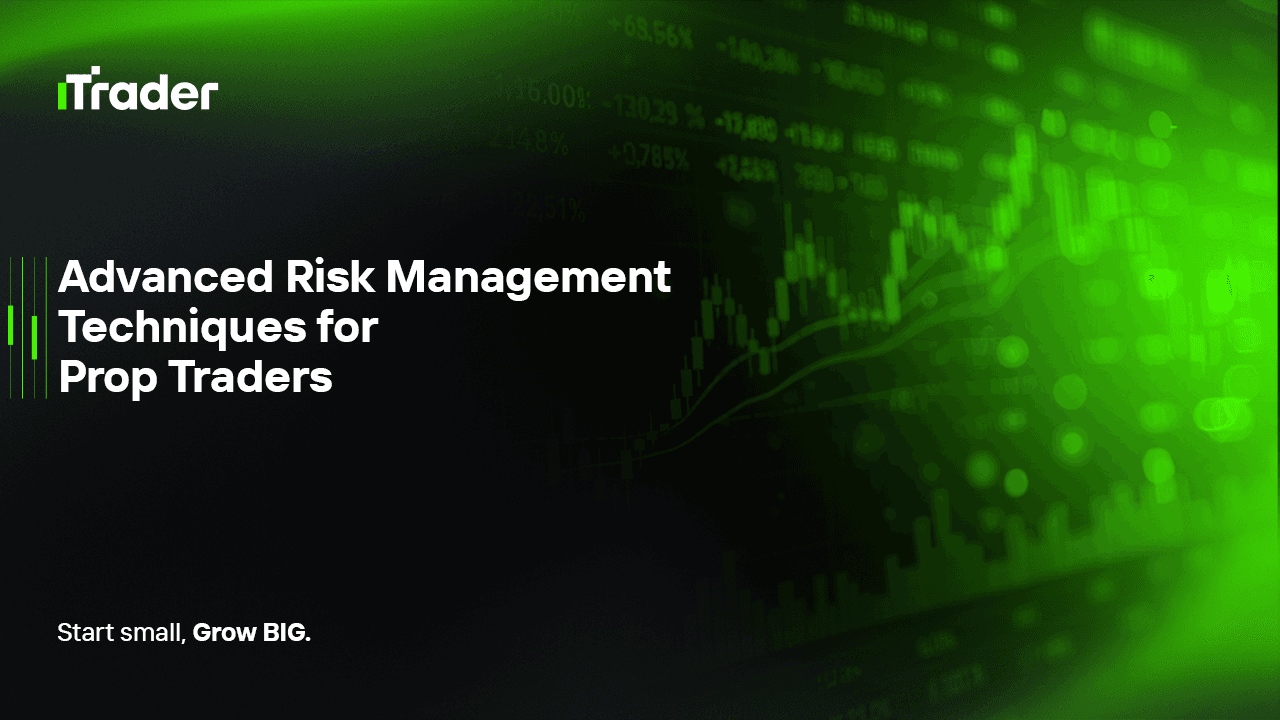2025-07-21
Trading for a proprietary firm differs significantly from retail trading, primarily in the approach to risk and responsibility. Managing someone else's capital under strict performance thresholds requires a more refined, systematic, and adaptive risk management framework.

In this blog, we break down the advanced techniques used by prop traders to control exposure, respond to changing conditions, and ensure long-term strategy survival.
AI Summary:
This blog outlines advanced-level risk management strategies specifically designed for professional proprietary traders. In volatile and uncertain markets, preserving capital and maintaining consistent performance require more than basic tools. We explore dynamic position sizing, correlation-aware exposure, trade clustering, adaptive drawdown controls, risk-of-ruin analysis, and Monte Carlo simulation, among other modern methodologies. These approaches help traders navigate institutional expectations, reduce structural risks, and develop robust trading systems.
For prop traders, the number one priority is not just generating profit, but avoiding destruction. In a high-risk environment, the following principles are fundamental:
Basic fixed-lot or fixed-percentage sizing is not enough for advanced trading. Instead, more adaptive approaches are used:
Adjusts trade size based on current market volatility.
Formula:
javaCopyEditPosition Size = (Risk Capital per Trade) / (ATR * Multiplier)
Adjusts position size based on recent equity curve performance.
Prop traders often run multiple strategies and instruments simultaneously, making correlation management essential:
Measures how similar different strategies respond to market conditions.
Losses don’t always occur randomly; they often form clusters. These are referred to as “structural drawdowns.”
Use psychological and statistical limits to manage open exposure.
RoR calculates the likelihood that a trading strategy will completely deplete capital.
iniCopyEditRoR = [1 - (B/A)] ^ A
Since market results are rarely linear, Monte Carlo simulation helps:
While some firms impose hard exposure caps (e.g., 5 lots total), advanced traders apply:
Dynamic caps based on real-time risk conditions.
Risk control must account for external conditions, not just internal metrics.
Top proprietary traders recognize that mental state is part of risk exposure.
Defend against overconfidence, revenge trading, confirmation bias
Advanced prop trading requires Order Management Systems (OMS) and Risk Management Systems (RMS):
Success in proprietary trading isn’t just about finding profitable strategies—it’s about managing risk with surgical precision. Beyond basic stop losses and 1% rules, serious traders employ techniques like correlation analysis, volatility-adjusted sizing, trade clustering, adaptive drawdown thresholds, and Monte Carlo simulations to build resilient systems.
Ultimately, the goal is not just to survive, but to thrive with consistency, clarity, and emotional control, even in the most unpredictable market environments.
© 2025 iTrader Global Limited|会社登録番号:15962
iTrader Global Limitedは、コモロ連合のアンジュアン自治島ムツァムドゥのHamchakoに所在し、コモロ証券委員会によって認可・規制を受けています。ライセンス番号は L15962/ITGL です。
iTrader Global Limitedは「iTrader」の商号で運営しており、外国為替取引業務を行う許可を受けています。会社のロゴ、商標、ウェブサイトはすべて iTrader Global Limited の専有財産です。
iTrader Global Limitedの他の子会社には、iTrader Global Pty Ltd(オーストラリア会社登録番号(ACN):686 857 198)が含まれます。 この会社は、Opheleo Holdings Pty Ltd(オーストラリア金融サービスライセンス(AFSL)番号:000224485)の認可を受けた代表者(AFS代表番号:001315037)です。登録住所は Level 1, 256 Rundle St, Adelaide, SA 5000 です。
免責事項: この法人は、本ウェブサイト上で取引される金融商品の発行者ではなく、それらに対して責任を負いません。
リスク警告: 差金決済取引(CFD)は、レバレッジにより資本の急速な損失リスクが高く、すべての利用者に適しているとは限りません。
ファンド、CFD、その他の高レバレッジ商品を取引するには、専門的な知識が必要です。
調査によると、84.01%のレバレッジ取引者が損失を被っています。取引を開始する前に、リスクを十分に理解し、資金を失う可能性があることを認識してください。
iTraderは、レバレッジ取引によるリスク、損失、またはその他の損害について、個人または法人に対して一切の責任を負わないことを明言します。
利用制限: iTraderは、法律、規制、または政策によりこのような活動が禁止されている国の居住者を対象として、本ウェブサイトやサービスを提供していません。